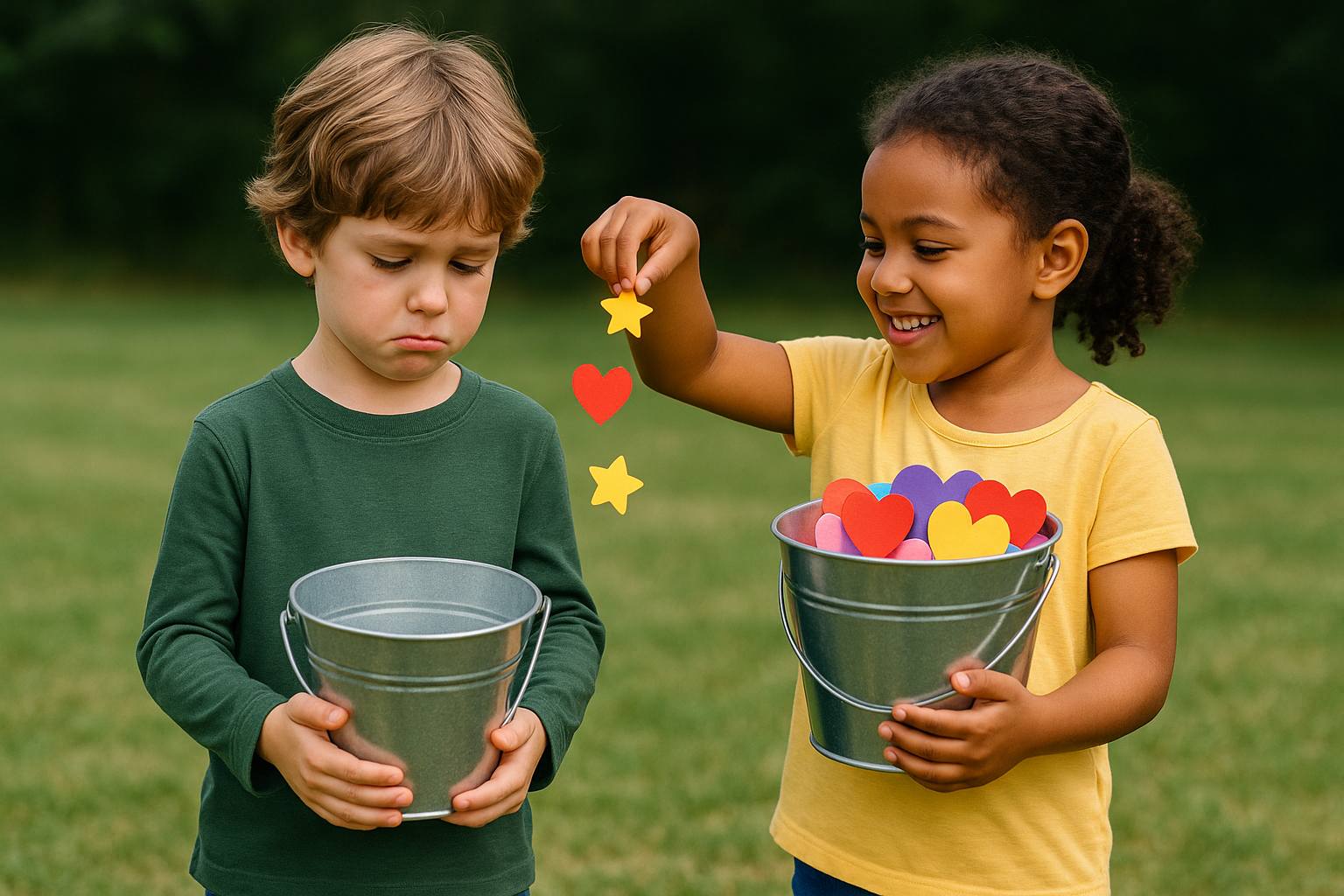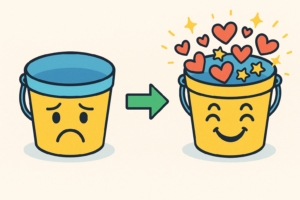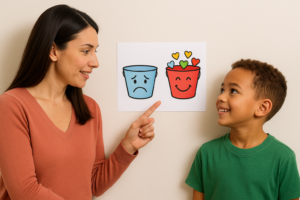
From Bucket Dipper to Bucket Filler: Helping Kids Change Course
Even the kindest kids sometimes have “bucket dipping” moments, times when their words or actions take away from someone else’s joy. The good news? With awareness and guidance, children can learn to spot these moments and turn them into opportunities for kindness.
What Is Bucket Dipping?
At AMC, we use the “bucket” as a simple way to talk about feelings. Everyone has an invisible bucket that holds their good feelings. When we’re kind, helpful, or encouraging, we fill someone’s bucket (and our own, too). When we’re unkind, impatient, or hurtful, even by accident, we dip into someone’s bucket, taking away a bit of their joy.
It’s normal for kids to dip sometimes. The key is teaching them to recognize it and make things right.
💡 Social Emotional Learning: Helping Kids Recognize Bucket Dipping
Kids can learn to identify “bucket dipping” by paying attention to:
- Changes in a friend’s facial expression (smile disappearing)
- Body language (walking away, crossing arms)
- Tone of voice (sounding hurt or upset)
- Their own feelings (guilt, regret, or discomfort)
The goal isn’t to make kids feel guilty, it’s to help them see that their actions have an impact, and that they can choose a different path next time.
🎯 How to Turn a Bucket Dipper into a Bucket Filler
Teaching positive behavior strategies means giving children clear steps to make amends:
-
Apologize sincerely – “I’m sorry I hurt your feelings.”
-
Offer help – “Can I help fix it?”
-
Give a compliment – “I think you’re a great friend.”
-
Make amends – “Let’s play together again.”
These steps work both at home and in the classroom, supporting parent-teacher collaboration on kindness habits.
🎨 Everyday Kindness Activities for Kids at Home
To help your child become a natural bucket filler, create a “kindness menu” they can choose from:
Share a toy with a sibling or friend
Include someone new in playtime
Use kind words during disagreements
Offer to help without being asked
Keep the list somewhere visible, like on the fridge, so it becomes a daily habit.
📚 Learn More
-
Children’s Book: How Full Is Your Bucket? For Kids – Tom Rath & Mary Reckmeyer

This heartwarming story follows Felix, a young boy who learns that every interaction either fills or empties his invisible bucket. Through relatable situations at home and school, children discover how kindness, empathy, and positive actions not only make others feel good but also fill their own bucket.
🎥 Watch it read aloud here: How Full Is Your Bucket? – YouTube Read-Aloud
Bucket Filling: What Is It and Why Is It So Important? – TeachingBrave (May 2025)
A quick guide for parents on what bucket filling is, why it matters, and how to teach it at home.
Can Your Child Fill Their Bucket? – Miss Suzanne Blog (2025)
A creative activity to help kids decorate their own “buckets” and choose happy words that make their heart feel full.
6 Ways to Fill Your Child’s Emotional Bucket – Storypod (recent)
Practical, everyday strategies to boost your child’s emotional well-being and empathy.
Final Thought:
Bucket dipping is a normal part of growing up, but it’s not where the story has to end. By helping children recognize when they’ve dipped and showing them how to refill, we’re giving them one of the most powerful life skills they can carry: the ability to choose kindness, again and again.
By Goldie Narboni



